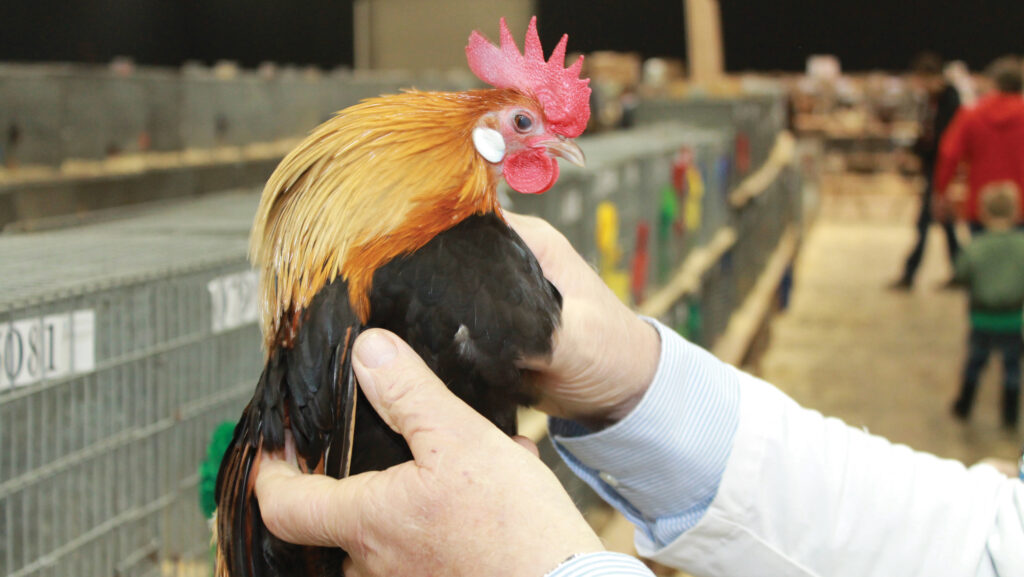Royal Welsh sees return of poultry after bird flu ban
 © MAG/Phil Clarke
© MAG/Phil Clarke A strong entry of sheep and a return of poultry to the 120th Royal Welsh Show for the first time in five years will enhance the livestock sections when the event opens its gates in just over a week.
The poultry show comes after the Welsh government eased its ban on poultry gatherings, a restriction which had been introduced to help prevent the spread of avian influenza as it swept the country.
See also: Britain’s Fittest Farmer – who’s in front as qualifiers head to Wales?
This has signalled the green light for poultry to make a comeback at the 2024 Royal Welsh Show, said its chief executive, Aled Rhys Jones.
“Thankfully, the situation with avian flu has improved and restrictions lifted to allow us to stage the poultry show once again,” he said.
“There hasn’t been a poultry show at the Royal Welsh since 2019 (pre-Covid), and we are all excited to see its eagerly awaited return in the Fur and Feather Pavilion.”
Support for sheep
Overall, livestock entries are “strong”, Mr Jones added, with nearly 7,000 animals competing over the four-day event, which runs from 22-25 July.
“Entries in the sheep section are extremely strong this year, with the Welsh breeds being well supported,” he said.
The only section which has seen a dip in numbers is cattle, which Mr Jones attributed to bovine TB, with many herds subject to movement restrictions.
But, with the Welsh Black Cattle Society holding its world congress during the show, that breed is bucking the downward trend, with entries at their second highest level in a decade.
There is also a first in the cattle classes, with new competitions introduced for Red Polls.
More horses and ponies will be exhibited too, partly a result of several new competitions, including trekking and “Ride Safe”.
Equine entries are up on last year, with some classes, such as one for retrained racehorses, seeing a doubling of numbers.
Feature county
It is symbolic that Ceredigion is this year’s feature county, on the show’s 120th anniversary, as the first Royal Welsh was held in the county, at Aberystwyth.
To mark the occasion, the county’s fundraising committee has commissioned a new song, “Brethin”. It will be performed for the first time at Moliant y Maes on the eve of the show by a newly formed choir, Côr Sioe’r Cardis, whose members are drawn from across Ceredigion.
Among the new features is a horticultural “village”, which includes a sensory garden, micro show gardens and competition marquees.
On the show’s closing day, Farmers Weekly will hold qualifying heats in the Sports Village for its Britain’s Fittest Farmer Competition, where farmers will face a series of physical challenges designed to test their speed, strength and stamina.
And, for farmers who have concerns about their fitness and health, Powys County Council is running a new initiative, “Farming Fit”, where visitors can get a free health check.
BVD testing reminder for show exhibitors
The Wales Veterinary Science Centre (WVSC) is reminding cattle keepers to ensure they meet their bovine viral diarrhoea (BVD) testing obligations, ahead of this year’s Royal Welsh Show.
Show rules require attending cattle to have either resided in a herd which has been tested as part of a recognised BVD eradication programme, or to have been individually tested for the BVD antigen, with a negative result.
Individual BVD antigen results may be obtained via blood sampling or tissue tagging. Proof of testing and negative status will be required when animals arrive at the show.
For those cattle keepers using herd status to demonstrate BVD freedom, antibody results must not be older than 12 months before the date of arrival at the show.
Dr Hazel Wright, WVSC centre manager, said: “This year’s Royal Wesh Show comes just weeks after the onset of compulsory annual BVD testing in Wales.
“We are now in a 12-month legislative transition period and the show could therefore be seen as a forerunner to those full-blown BVD rules, including movement restrictions for not negative herds, which will begin in July 2025.
“The WVSC is therefore urging cattle keepers to make sure they know their testing responsibilities prior to attending the show.”
In order to ensure that test results arrive in time for the show, cattle keepers are advised to make sure their samples arrive at the WVSC at least a week before the show.
